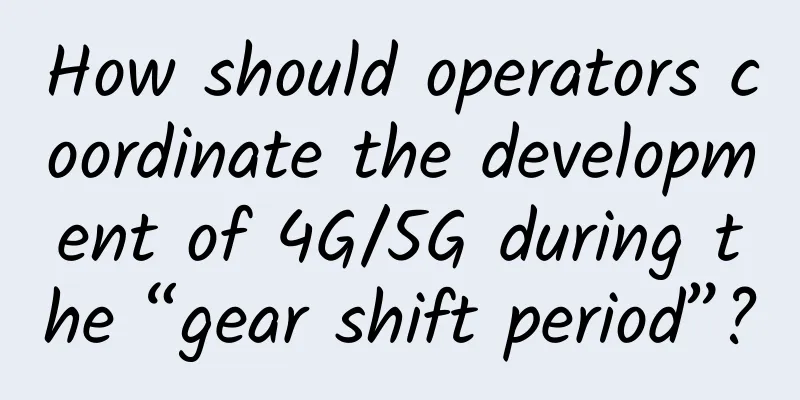The concept and installation plan of network bridge and wireless bridge

|
What is a bridge A bridge is like a smart repeater. A repeater receives signals from one network cable, amplifies them, and sends them to the next cable. In comparison, a bridge is more sensitive to information coming down from a checkpoint. A bridge is a technology that forwards frames, blocks them according to MAC partitions, and isolates collisions. A bridge connects multiple segments of a network at the data link layer. A bridge is also called a bridge. It is a storage/forwarding device that connects two local area networks. It can divide a large LAN into multiple segments, or interconnect more than two LANs into a logical LAN, so that all users on the LAN can access the server. The bridge connects two similar networks and manages the flow of network data. It works at the data link layer, which can not only extend the distance or range of the network, but also improve the performance, reliability and security of the network. After network 1 and network 2 are connected through the bridge, the bridge receives the data packet sent by network 1, checks the address in the data packet, and discards it if the address belongs to network 1. On the contrary, if it is the address of network 2, it will continue to be sent to network 2. In this way, the bridge isolation information can be used to divide the same network number into multiple network segments (belonging to the same network number), isolate the safe network segment, and prevent users in other network segments from illegal access. Due to the segmentation of the network, each network segment is relatively independent (belonging to the same network number), and the failure of one network segment will not affect the operation of another network segment.
What is a wireless bridge As the name implies, a wireless bridge is a bridge for wireless networks. It uses wireless transmission to build a communication bridge between two or more networks. Wireless bridges are divided into circuit bridges and data bridges based on the communication mechanism. The wireless transmission mechanism of the circuit bridge adopts the PDH/SDH microwave transmission principle, and the interface protocol is implemented using the bridging principle. It has the characteristics of stable data rate and small transmission delay. It is suitable for converged network solutions for multimedia needs and is suitable for interconnection as 3G/4G mobile communication base stations. The data bridge adopts IP transmission mechanism, and the interface protocol is implemented by bridging principle. It has the characteristics of flexible networking and low cost. It is suitable for network data transmission and low-level monitoring image transmission, and is widely used in various data network solutions based on pure IP architecture. The difference between wireless bridge and microwave transmission
Erection plan How will the wireless bridge be used and set up in practice? Here are some possible installation solutions: 1. Peer-to-peer method Point-to-point (PTP), or "direct transmission". Wireless bridge devices can be used to connect two fixed networks located in different buildings. They are generally composed of a pair of bridges and a pair of antennas. The two antennas must be placed in opposite directions, the outdoor antenna is connected to the indoor bridge with a cable, and the bridge is physically connected to the network. 2. Relay method That is, "indirect transmission". Points BC are not visible, but they can be indirectly visible through Building A. And the communication requirements of bridge equipment are met between points AC and BA. A relay method can be used, with Building A as a relay point. Bridges and directional antennas are placed at each of BC. The optional methods for point A are: Ⅰ Place a bridge and an omnidirectional antenna. This method is suitable for situations where the transmission bandwidth requirement is not high and the distance is relatively short; Ⅱ If point A uses a single-point to multi-point wireless bridge, two wireless network cards can be inserted into the wireless bridge at the center point A. The two wireless network cards are connected to two antennas through feeders, and the two antennas point to network B and network C respectively; Ⅲ Place two bridges and two directional antennas. 3. Point-to-multipoint transmission Because wireless bridges are often difficult to find power nearby due to special requirements when building networks. Therefore, it is very important to have PoE (Power over Ethernet) capabilities, such as supporting 802.3af international standard Ethernet power supply, which can provide 12V DC power to the bridge through Category 5 cables. Generally, bridges can be managed through the Web or SNMP. It also has advanced link integrity detection capabilities. When it is used as an AP, it can automatically detect whether the upstream Ethernet connection is working properly. Once the upstream line is found to be disconnected, it will automatically disconnect the wireless workstation connected to it. In this way, the disconnected workstation can be discovered in time and search for other available APs, which significantly improves the reliability of network connections and also provides convenience for timely locking and troubleshooting of problems. In short, with the maturity and popularization of wireless networks, the application of wireless bridges will also be greatly popularized. 4. Application Environment Under the condition of no high obstacles (mountains or buildings), a pair of high-speed networking and temporary networking for field operations. Its working distance depends on the environment and antenna. Currently, it can achieve 7km point-to-point microwave interconnection. A pair of 27dbi directional antennas can achieve 10km point-to-point microwave interconnection. A 12dbi directional antenna can achieve 2km point-to-point microwave interconnection; a pair of wireless bridges that only realize link layer functions are transparent bridges, while a device with network layer functions such as routing and 24dbi directional antennas can achieve heterogeneous network interconnection at the network layer is called a wireless router, which can also be used as a third-layer bridge. Wireless bridges are usually used outdoors, mainly to connect two networks. It is impossible to use only one wireless bridge, point-to-point requires more than two, while AP can be used alone. Wireless bridges have high power, long transmission distance (up to about 50km), strong anti-interference ability, etc. They do not come with their own antennas, and are generally equipped with parabolic antennas to achieve long-distance point-to-point connections. 802.11n wireless bridges are now available on the market, with a transmission rate of more than 300Mbps. However, due to various factors, the actual rate is far lower than the value advertised by the merchant. But compared with 11g, the rate is indeed much higher, which also makes it possible for us to require high bandwidth and high transmission rate. With the continuous development of technology, I believe that more new products will be derived with the emergence of new technologies. |
<<: How can the CDN industry break through the era of negative gross profit?
>>: Wired and wireless network wiring solutions for different rooms (pictures and text)
Recommend
The concept and installation plan of network bridge and wireless bridge
What is a bridge A bridge is like a smart repeate...
CloudCone Los Angeles SSD VPS Flash Sale $19.38/year - 1GB/30GB SSD/1TB monthly traffic
CloudCone launched the SSD VPS Flash Sale yesterd...
Programmers need to understand CDN, this article should be enough
I recently learned about edge computing and found...
Megalayer October promotion: US dedicated servers from 199 yuan/month, high-defense servers from 299 yuan/month, optional CN2 line
Megalayer has launched the Golden Autumn October ...
Emirates du and Huawei jointly launch the world's first "5G-A Smart Home" with 10G network support
During the Global Mobile Broadband Forum (MBBF202...
Are driverless cars, smart homes, telemedicine, etc. all dependent on 5G?
1. As for the reason why 5G was over-promoted bef...
Do we really need a cloud-native edge to support 5G?
[51CTO.com Quick Translation] Convergence has bee...
The mature gigabit wireless network industry chain is the cornerstone for the 5G era
Recently, the biggest event of China Unicom after...
China has 600,000 5G base stations. Why should 5G investment be moderately ahead of schedule?
In the popular movie "My Hometown and Me&quo...
5G+IoT, why will it usher in a completely different era of “operator of everything”?
In the previous article "Entering the Billio...
I would like to say a few more words about this communication failure...
These days, everyone is paying attention to the ...
How 5G will change engineering design
The past decade has seen unprecedented technologi...
Academician Wu Hequan: 5.5G does not require full network coverage, and recommends joint construction and sharing
IT Home reported on December 7 that the 2023 Worl...
WebTransport launches its application practice
Business Challenges of Web Broadcasting Whether i...
BuyVM: 1Gbps unlimited traffic KVM starting from $2/month, AMD Ryzen+NVMe, available in Las Vegas/New York/Luxembourg
BuyVM has added a large number of machines in Las...









